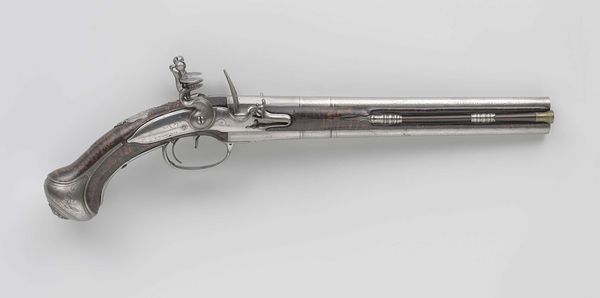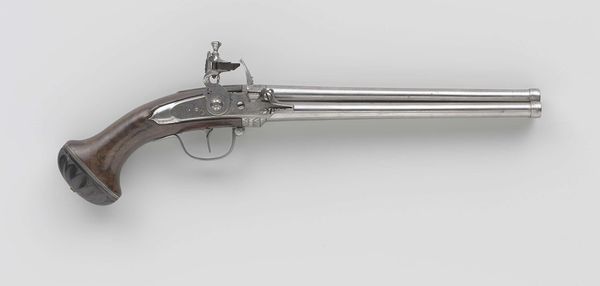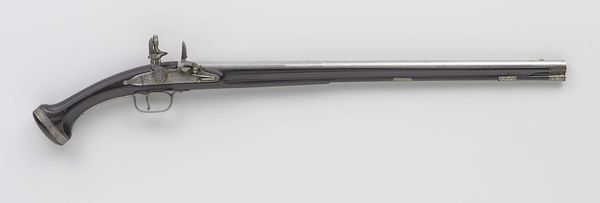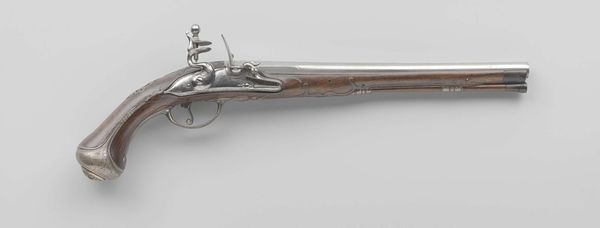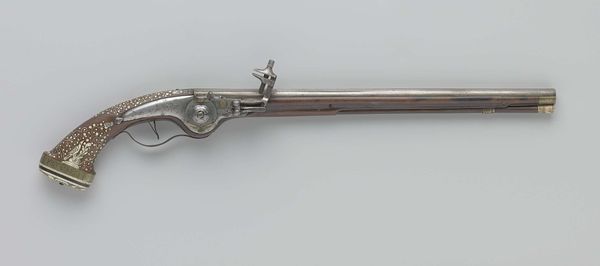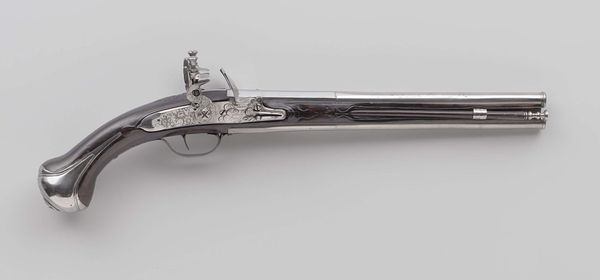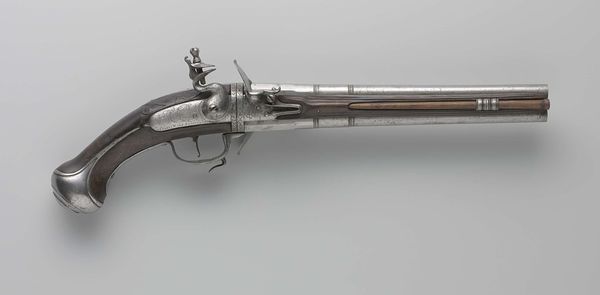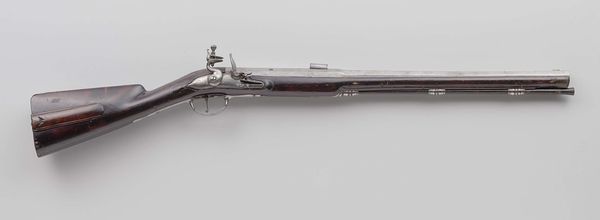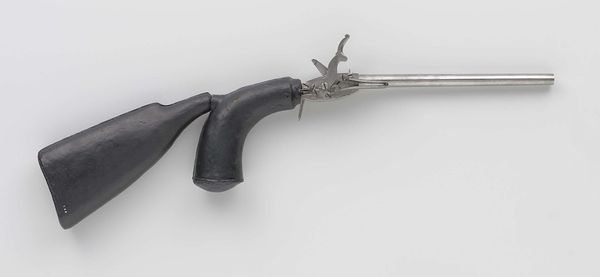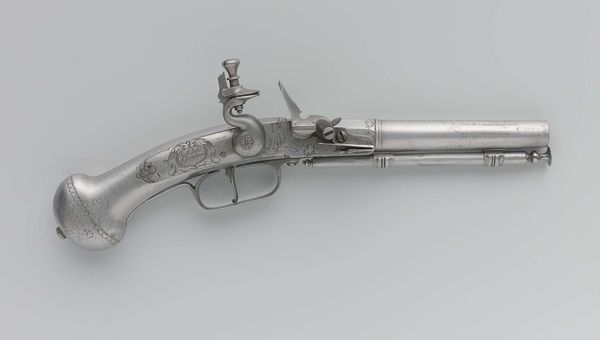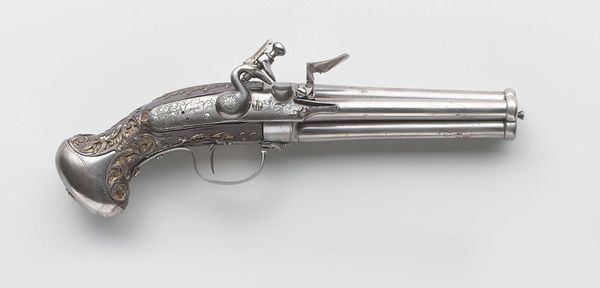
metal, sculpture, wood
#
baroque
#
metal
#
sculpture
#
wood
Dimensions: length 63.8 cm, length 48.9 cm, diameter 14.2 mm, weight 1402 gr
Copyright: Rijks Museum: Open Domain
Curator: Here in the Rijksmuseum, we're looking at an object listed as "Radslotpistool," a wheel-lock pistol crafted around 1640 by Jan Kitzen. It's quite a piece, blending metal and wood into a striking…tool. Editor: Tool is definitely one word for it. The first thing that strikes me is how incredibly elegant it is. The streamlined design and the high polish on the metal almost contradict its deadly purpose. Curator: Right. Its elegance definitely reflects its place in society. These weren't mass-produced weapons. Owning a piece like this spoke to wealth, status and privilege, things that intersect quite significantly with the violence it represents. It makes you wonder about the narrative of power being literally held in one’s hand. Editor: Absolutely. If you consider its presence, or placement, let’s say within baroque artistic conventions, with its flourishes, theatricality, even excess, that almost seems to soften the object, distracting us from its real intention. But how do you think these kind of tools influenced early modern concepts of violence? Curator: Significantly. I mean, it made personal conflict – potentially lethal conflict – much more accessible. A skilled person would feel much more confident in situations of oppression. I wonder though, does that increase personal responsibility to stand for something – did having that option also make taking passive positions an active choice? Editor: And where does the gallery fit in here? Displaying objects such as these raises uncomfortable questions of cultural legacy. There are significant ethical considerations in how institutions frame objects whose primary function was violence and oppression, especially regarding ongoing historical harms. Curator: Precisely, and maybe understanding its function and creation leads to recognizing this power in modern forms today. Art institutions that display weapons need to confront their role in perpetuating or challenging narratives of power. That needs constant consideration to achieve the equality you mention. Editor: Definitely, and maybe, one conversation at a time, through one gallery at a time, we can start understanding the dynamics that govern history.
Comments
No comments
Be the first to comment and join the conversation on the ultimate creative platform.
